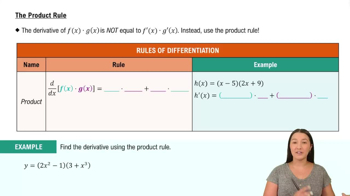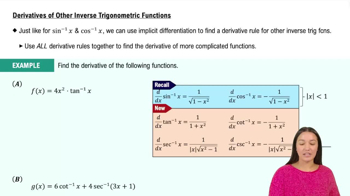Textbook Question
In Exercises 41–58, find dy/dt.
y = (1/6)(1 + cos²(7t))³
 Verified step by step guidance
Verified step by step guidance Verified video answer for a similar problem:
Verified video answer for a similar problem:



 5:02m
5:02mMaster Intro to the Chain Rule with a bite sized video explanation from Patrick
Start learning